Google Analytics For Beginners
If you have a website to promote your business, products, and services, it is important that you understand how it’s performing to assess what you’re doing well and to help identify any areas for improvement. 
If you don’t know how much traffic your website is getting, the number of visitors you receive, how they’re finding you online, the number of pages they visit and how long they spend consuming your content, your website maybe underperforming, and you probably haven’t got an effective web presence
What Is Google Analytics?
Google Analytics is a tracking and reporting tool that you can install (or have installed) on your website to track visitor interaction using a vast number of metrics and KPI’s (Key Performance Indicators). With Google Analytics, you can log on at any time to see the number of people currently on your website, the number of visitors you’ve had over a specified period, how long they spend on your site, the pages of your website that perform well, the pages that “put customers off” and much more.
Put simply, Google Analytics is an incredibly powerful resource that can help you assess the overall performance of your website and highlight opportunities for improvement.
What Does Google Analytics Track?
Google Analytics tracks many key metrics to help you understand how your website is performing. The most commonly used statistics include:
- The number of visitors on your website right now, in real time.
- The number of visitors your website / pages receives over a specified period.
- The average duration of these visits.
- The most visited pages on your website.
- The least visited pages on your website.
- How your visitors navigate through the different pages of your website.
- How your visitors found your website.
- Where your visitors came from (geographically speaking)
- Which keywords did visitors use before clicking on your website?
- Visitor bounce rate (the percentage of visitors who visit your site and then leave ("bounce") rather than clicking through to the other pages of your site)
Introducing Dashboards...
With so much information available, Google Analytics can appear a little overwhelming at first glance. To simplify things, performance metrics are grouped by default and displayed in “Dashboards”, accessible on the left side of the screen. At the time of writing, these main dashboards consist of the following: “Overview (Home)”, “Real-time”, “Audience”, “Acquisition”, “Behaviour” and “Conversions”.
Clicking on each dashboard will provide a more in-depth look into the statistics, enabling you (or your Web Developer) to make informed conclusions about the merits and weak points of your website.
Overview / Home Page Dashboard
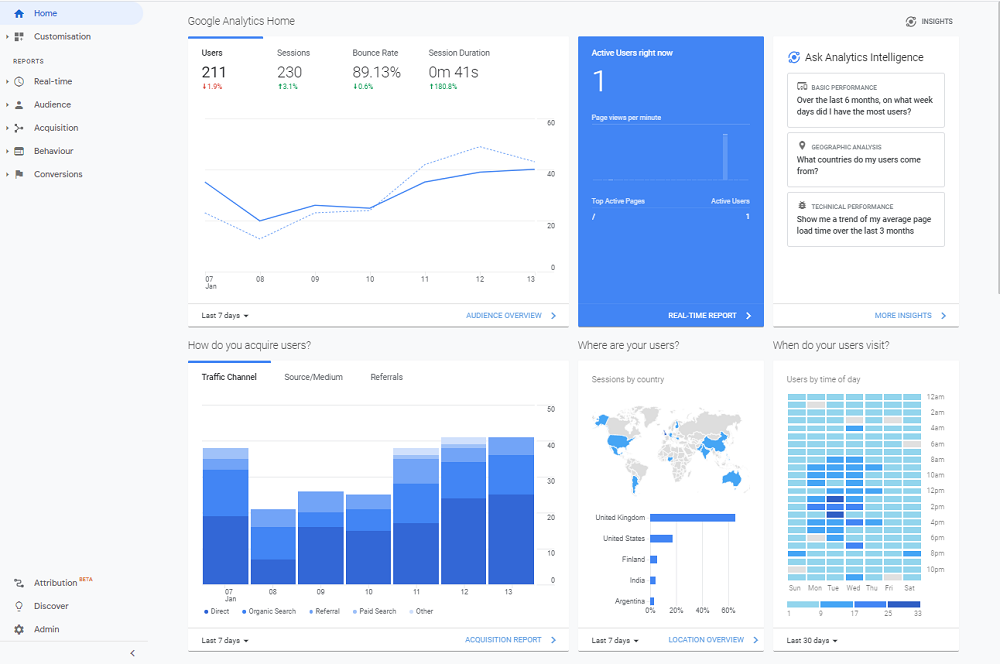
Provides an overview of your main stats, displayed in various formats including graphs, tables and other types of data, placed on individual “cards” for increased legibility. Typically, each “card” can be clicked on to “deep dive” into the data for more information and further insights.
Real-Time Dashboard
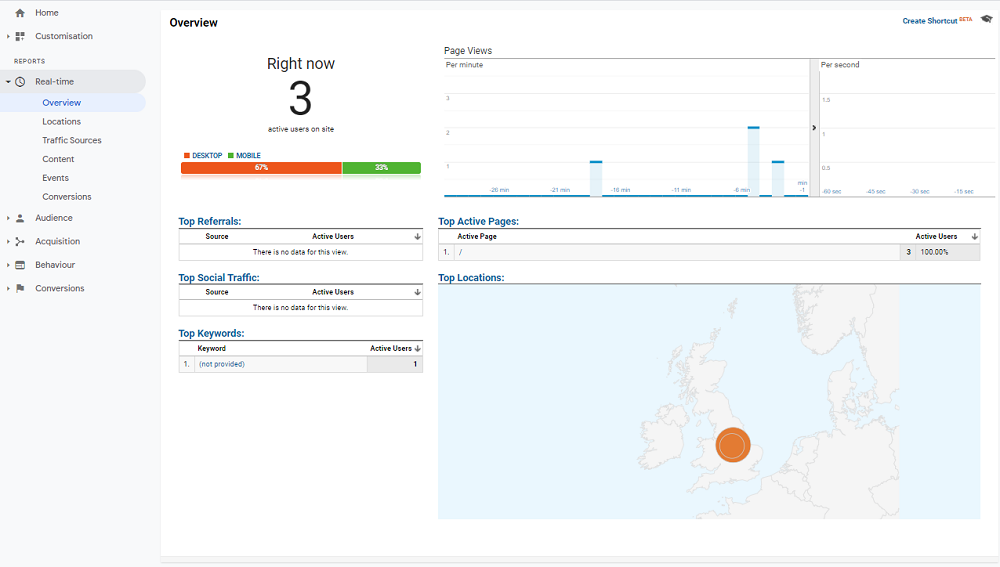
Shows the number of people currently visiting your website, in real time. Shows you top referrals, top search traffic, top keywords, current page views, top active pages, and top locations of real time visitors.
Audience Dashboard
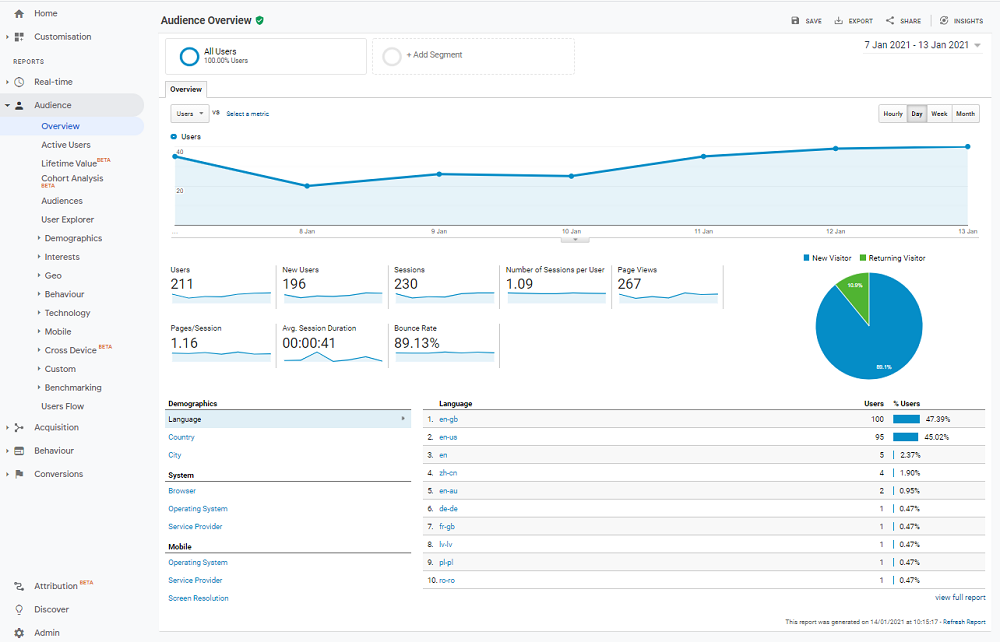
Highlights number of users over a selected period (the date range of which can be changed in the top right corner of the screen as required). Stats reported here include number of users, new users, sessions, number of sessions per user, page views, pages per session, average session, new visitors vs. returning visitors, visit duration and bounce rate.
Additional demographic information includes language, country, city, browser, operating system, and service provider.
Acquisition Dashboard
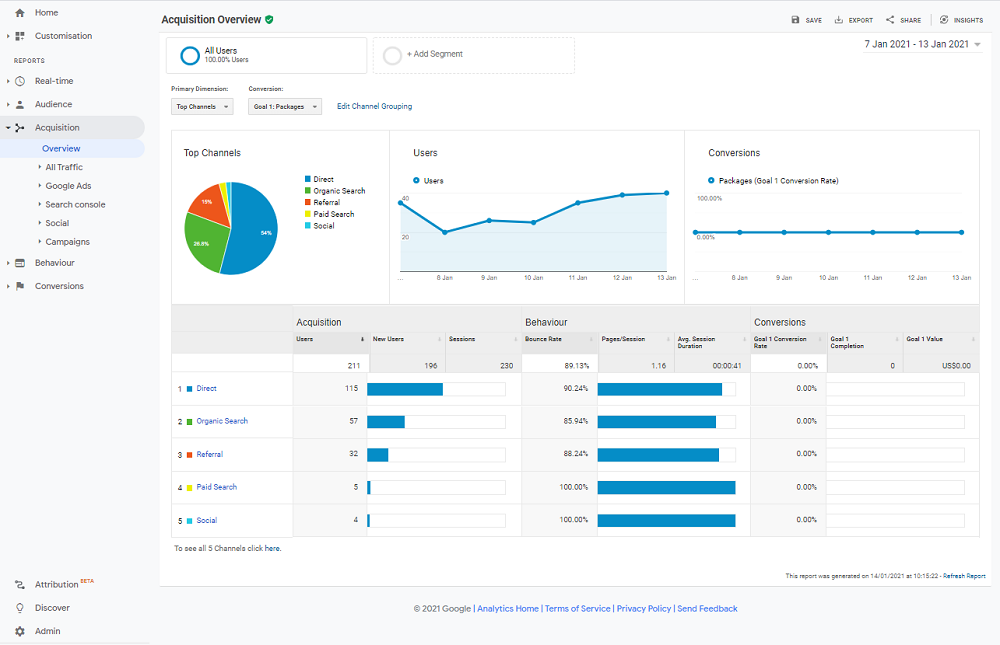
Shows how you acquired your visitors, organised into separate “channels”. These include direct, organic search, referral, paid search, social and email. Additional information regarding these channels includes the total number of users per channel, new users per channel, sessions per channel, pages per session per channel, bounce rate and goal conversions.
Behaviour Dashboard
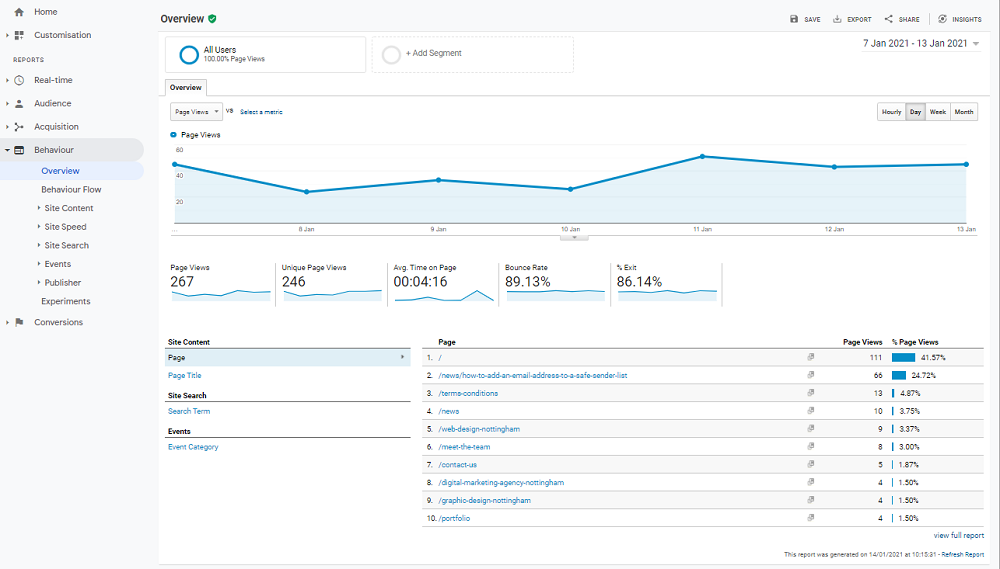
The behaviour dashboard highlights how your visitors have interacted with your website during their visit. Information reported includes page views, unique page views, average time spent on page, and the bounce rate and exit rate for every page on your website.
This enables you to see which pages are successfully captivating your visitors, encouraging them to click through to the other areas of your site, compared against the pages which customers dislike the most and have seen last before existing your site.
What Should You Concentrate On?
Although this can all seem daunting (especially if you’re new to Google Analytics), you should be able to get some real value from paying close attention to a few important statistics.
Firstly, I recommend selecting two different date ranges from the top right corner of the screen. One for the past month, and one for the past year. This gives you a general idea of your site’s performance over both the long and short turn, offering a more in-depth perspective.
My recommendations on important metrics to focus on are:
Behaviour Overview – Showing you how many visits the individual pages of your website have achieved. This highlights which pages are the most popular (and could therefore be enhanced with more call-to-actions and incentives for visitors to convert into enquiries), and which pages need to be worked on to retain your visitors and to gain more traffic.
Acquisition Overview – To see where your traffic is coming from. If you see that the majority of your visitors have come from social media, it may be worth investing more time and money in these areas to increase the number of visitors to the site. Similarly, if a low percentage of visitors have arrived at your website through organic search, your website could be underperforming in Google, have poor rankings or may be ranking for the wrong keywords. If this is the case, contact your Web Developer / Marketing Company and ask them how to increase your organic reach through SEO (Search Engine Optimisation) and adding more content to your website.
In Summary…
If you have a website, you need to be recording and analysing its performance, in order to make informed decisions about your marketing efforts. Consult with your Web Developer and ask them to highlight some opportunities presented in Google Analytics, so you can spend your time, capital, or both, wisely.

